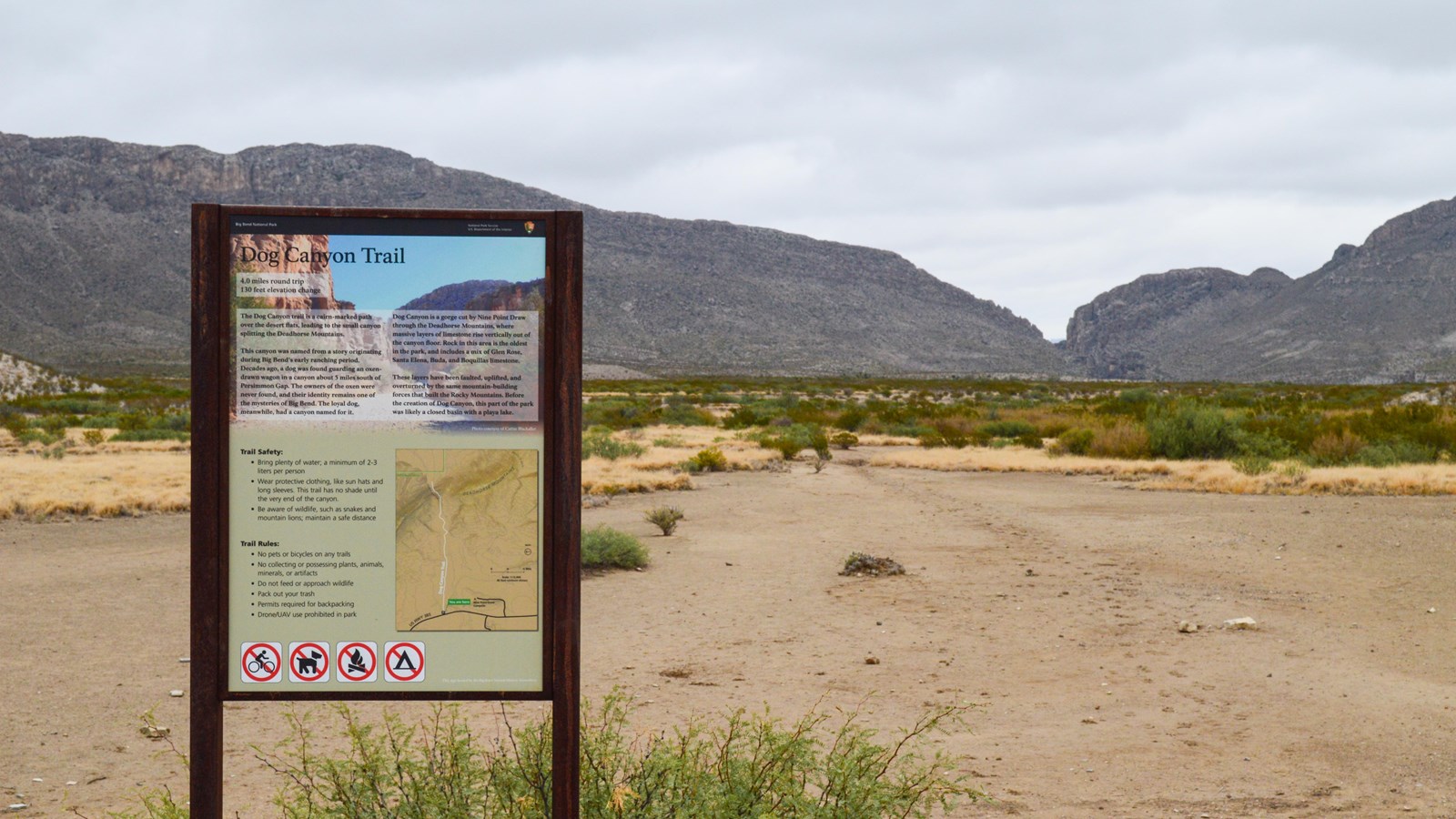Last updated: April 3, 2021
Place
Dog Canyon Trail

NPS/C. Negele
Quick Facts
Location:
4.5 miles south of Persimmon Gap Entrance
Amenities
4 listed
Cellular Signal, Historical/Interpretive Information/Exhibits, Parking - Auto, Trailhead
Trail Information
Roundtrip distance: 4 miles (6.4 km)Elevation change: 50 feet (15 m)
Average hiking time: 2-3 hours
Dogs and other pets are not allowed on any trails in the park.
The Dog Canyon trail is a relatively flat, cairn-marked path leading to a canyon that splits the Deadhorse Mountains. It is a pleasant hike in the early morning or late afternoon hours when temperatures are moderate. The majority of the trail passes through scant desert vegetation, including creosote bush, cacti, and grasses. It is important to note that after a good rainfall the trail and surrounding soil turns into a clay mud that forms thick clumps on hiker's shoes and makes walking difficult. At 1.5 miles (2.4 km) from the trailhead, the trail enters a (normally) dry wash. A metal sign marks the intersection. Pay close attention to this location before continuing, as it can easily be missed on the return trip. Take a left turn here and follow the rocky wash the remaining 0.5 mile (0.8 km) into Dog Canyon. High limestone walls quickly envelope hikers and one is able to walk between the towering cliffs of the canyon and out the other end. Most hikers turn around where the canyon ends and repeat the journey back to their vehicles.
Accessibility
The first 1.5 miles of the trail is fairly flat walking on a sand and dirt trail. The last 0.5 miles is in a rocky drainage which makes for very unstable footing. Other than one trail junction at 1.5 miles, it is a very straightforward hike to the canyon one can see from the road.A paved pullout at the trailhead provides parking for about five vehicles.
Hike Smart
Bring plenty of water!
Carry 1 liter of water per person per hour that you plan to hike. The importance of carrying enough water in this hot, dry climate cannot be overstated!
Eat
Your body needs food for energy and salts and electrolytes to replace what it's losing from perspiration. The dry climate at Big Bend means that sweat often evaporates almost instantly; your body is likely losing lots of moisture and salts without you even realizing it. Eat plenty of salty snacks to keep your body's salt-to-water ratio in balance.
Sun protection
Carry sunscreen and use it liberally. Hats are also strongly recommended. It may seem strange to wear long-sleeved shirts and pants in hot weather, but many hikers choose lightweight, breathable clothing which covers their arms and legs to protect themselves from the sun.
Don't leave people behind
If you're hiking in a group, make sure the person in the back always has someone to help.
Be aware of wildlife
Keep an eye out for snakes, and remember to maintain a safe distance between yourself and all wildlife. Animals in the park are wild and should never be approached, harassed, or fed.
Don't stack rocks
Cairns are stacks of rocks which are sometimes used to mark trails in areas where they are hard to follow. Randomly stacked rocks can lure hikers off the correct trail.
